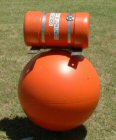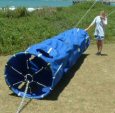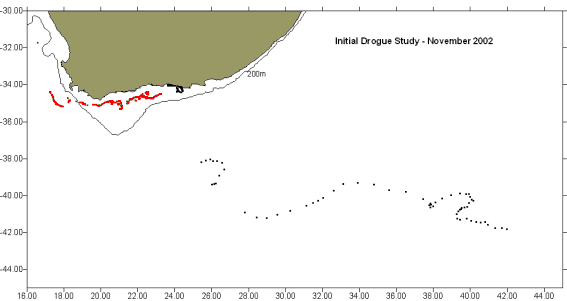Satellite Drogues

The Satellite Drogue is used for environmental research applications within the context of broader oceanographic programs. The drogues were developed in-house for the study of current patterns along the South African and East-African coasts in conjunction with Acoustic Doppler current meters deployed along the coast for various oceanographic research programmes.


In the MKI Satellite drogue consists of a satellite communicator, encapsulated in a PVC tube, which is attached to a float. In the new design, the MKII Satellite Drogue the satellite communicator will be housed inside the float, to make the unit more robust. The satellite communicator is powered by lithium batteries (78Ah), which can last up to 4 years with data interogation every 8 hours. The communicators link to the Indian Ocean Region (IOR) Satellite in the southern African and Indian ocean regions and data (GPS positions) are received either via e-mail or by downloading the data from a centralized database using specialized software.


The drogue "sock" is linked to the float and communicator by means of a 2m long 10mm galvanised chain, which adds weight to the float, to enable the float to stay in the upright position. The "sock" itself is made from a polyurethane coated nylon material which is kept "open" with several polypropylene pipes that are stiched into the sock. The bottom pipe has lead added to it to enable the "sock" to sink upon deployment and ensure that the "sock" stays deployed. The "sock" itself is 5 meters long with various 400mm holes to allow for water movement.
The first deployment of the satellite drogues was made during November 2002 of Tsitsikamma, South Africa.

Problems occured with data being lost, due to the satellites being unable to obtain positions from the communicators and it caused gaps in the data as can be seen in the plot of the intial study positions, with further developments these problems have now been sorted out.
In July 2003 a drogue was deployed during the African Coelacanth Ecosystem Programme's training cruise on the FRS Algoa.



